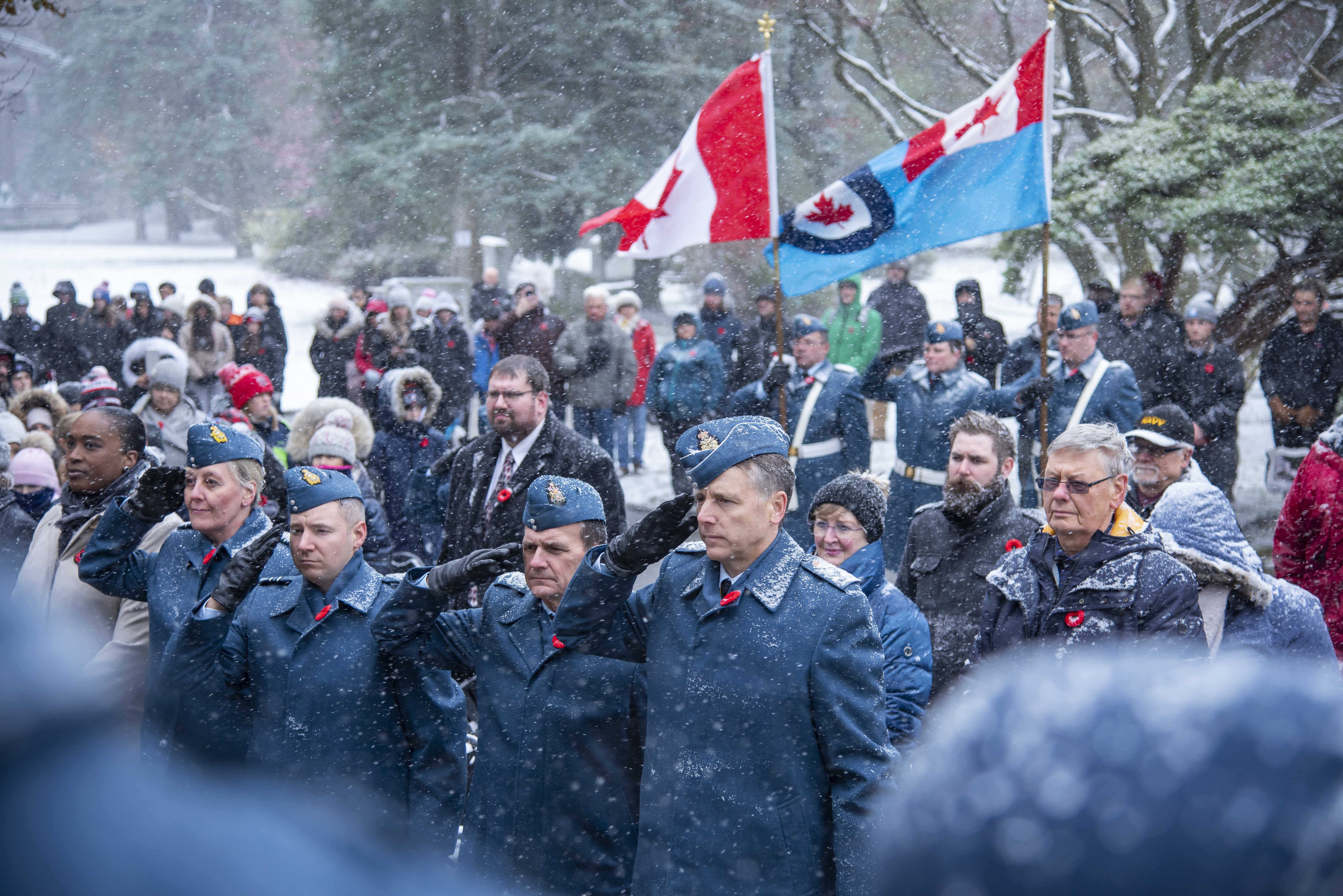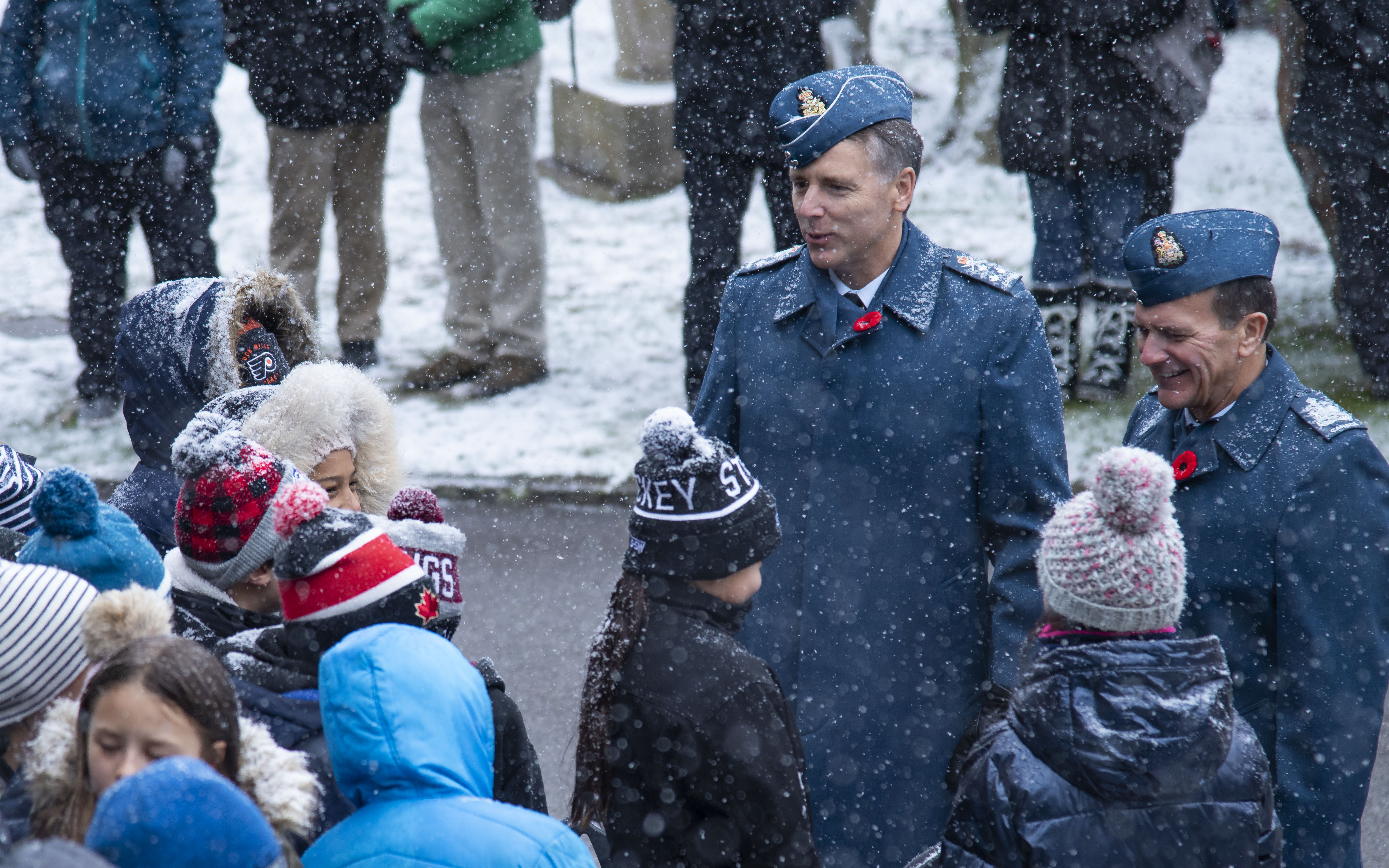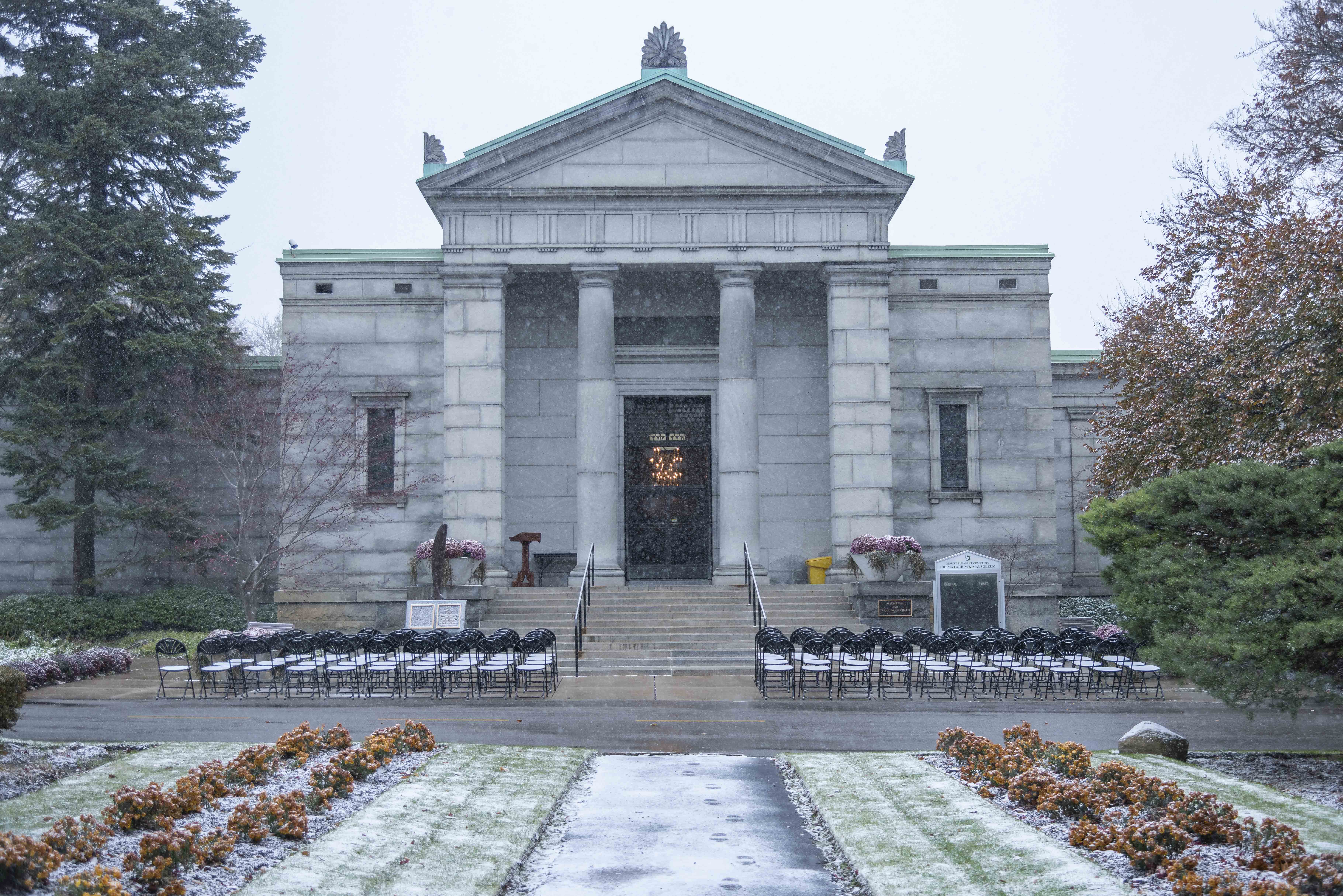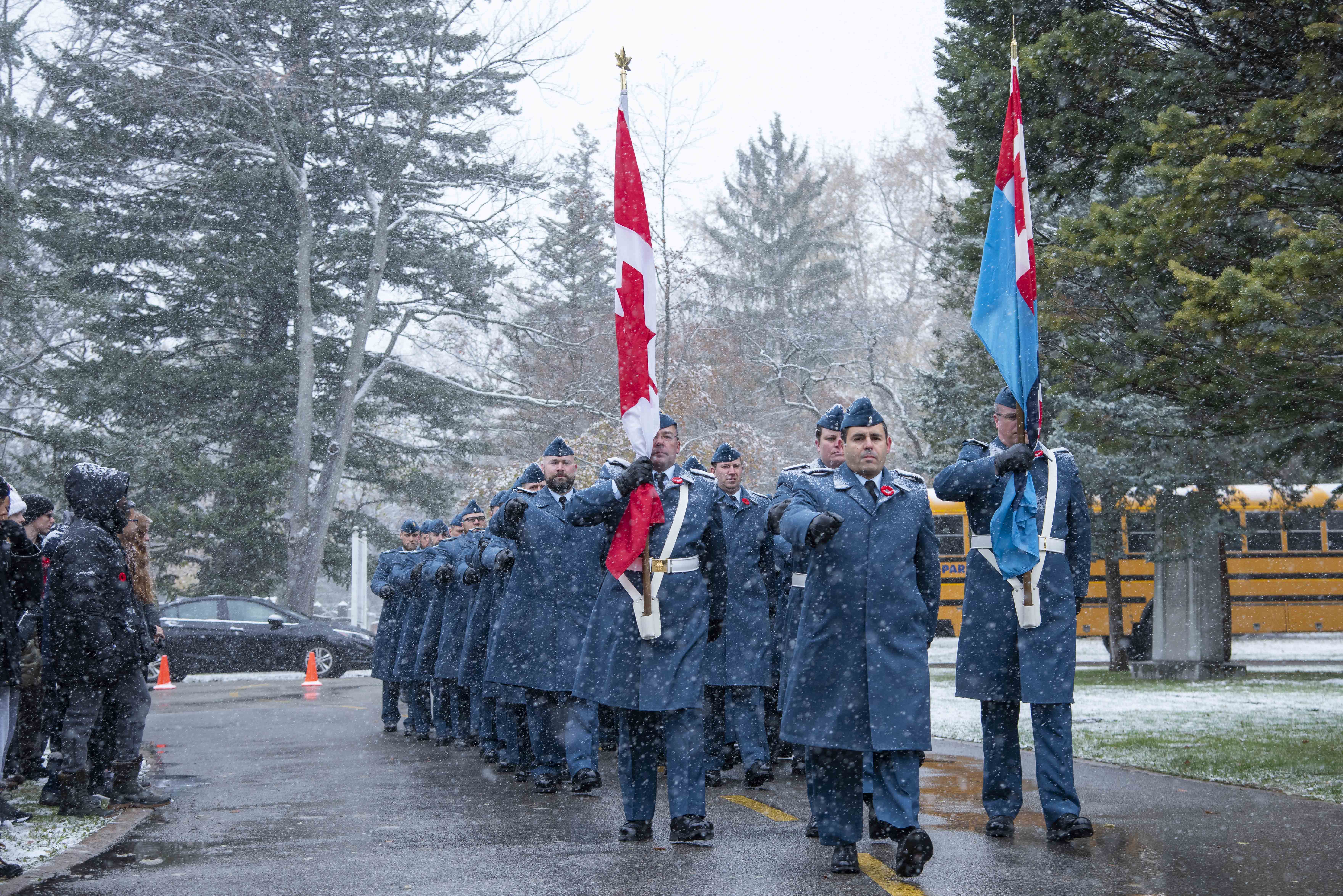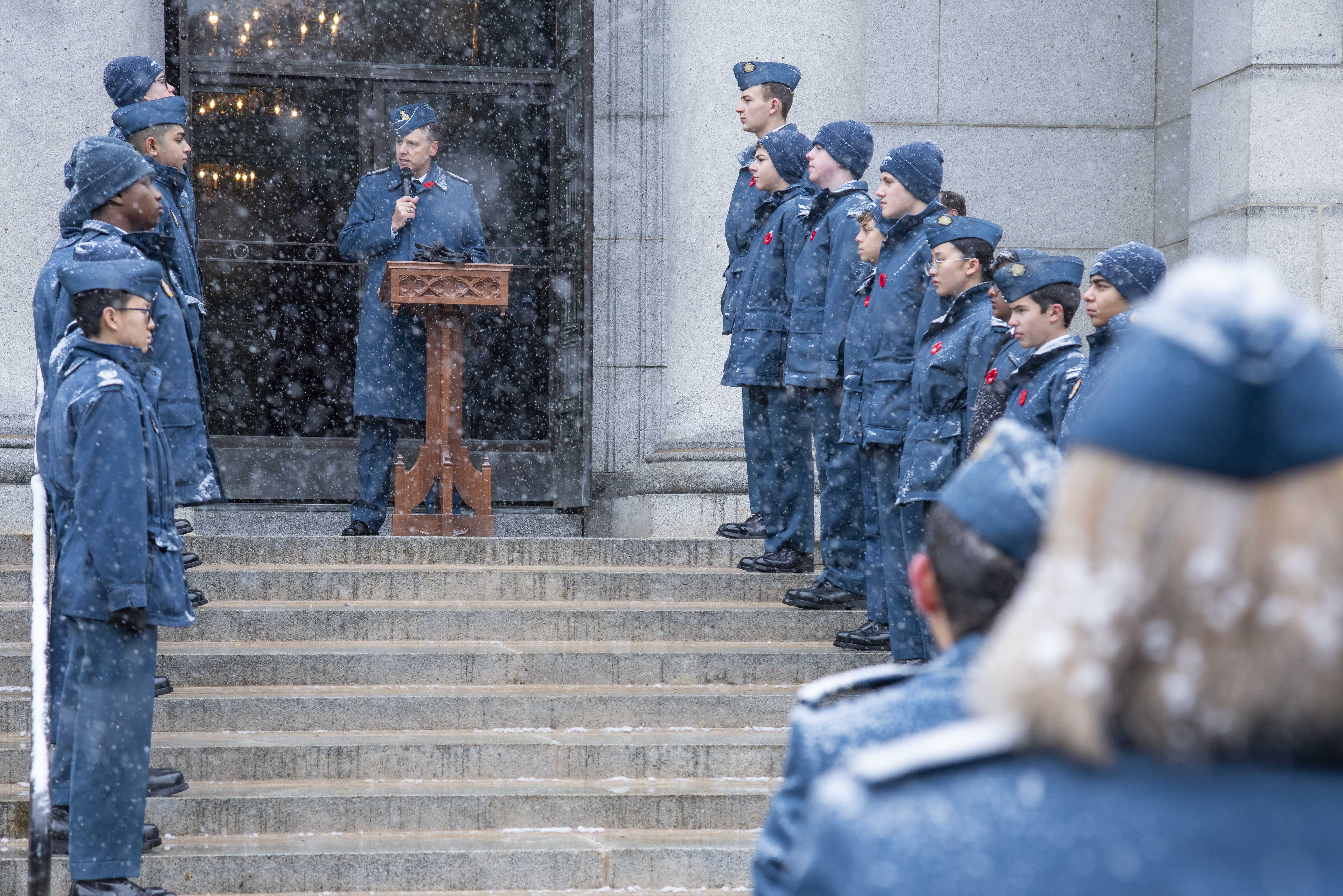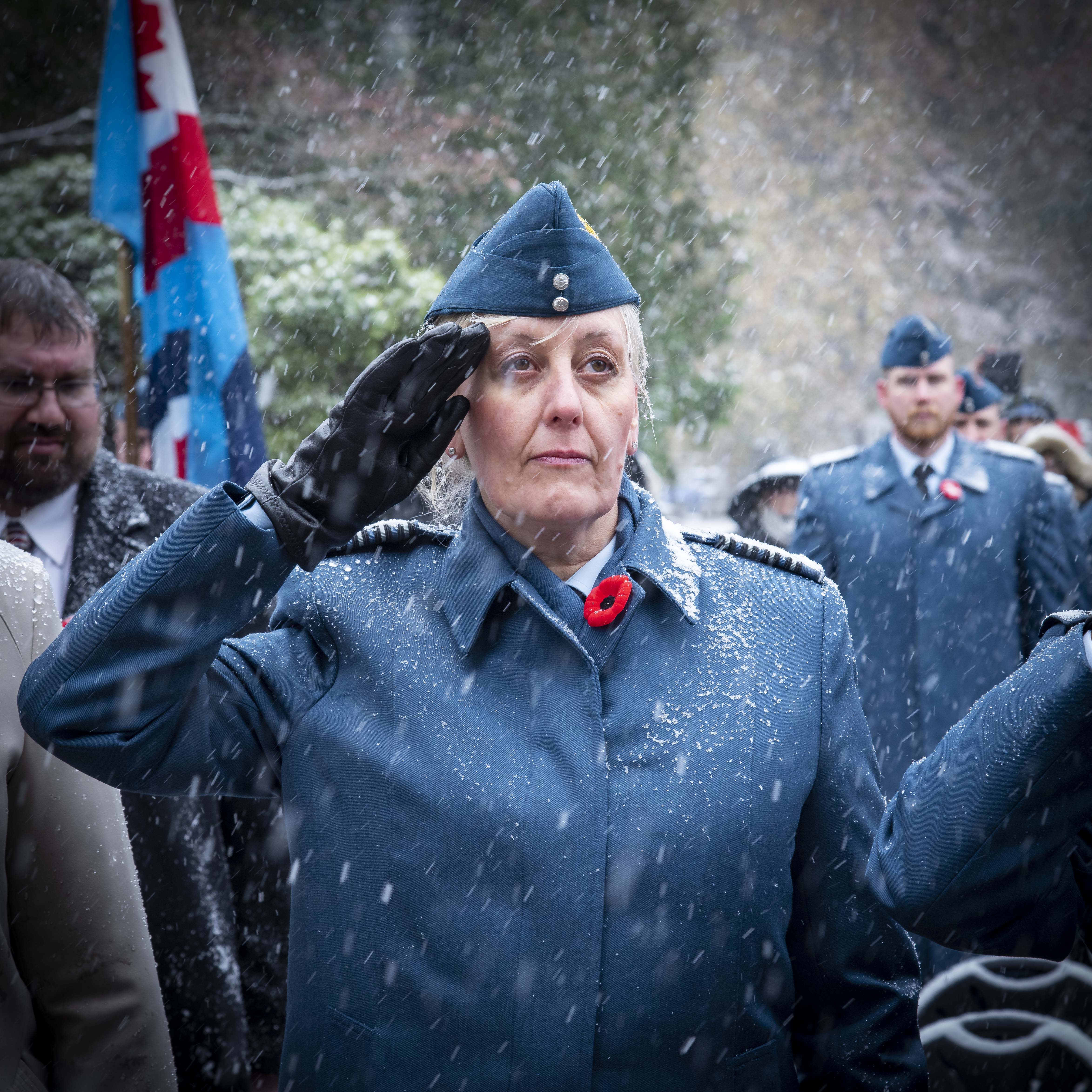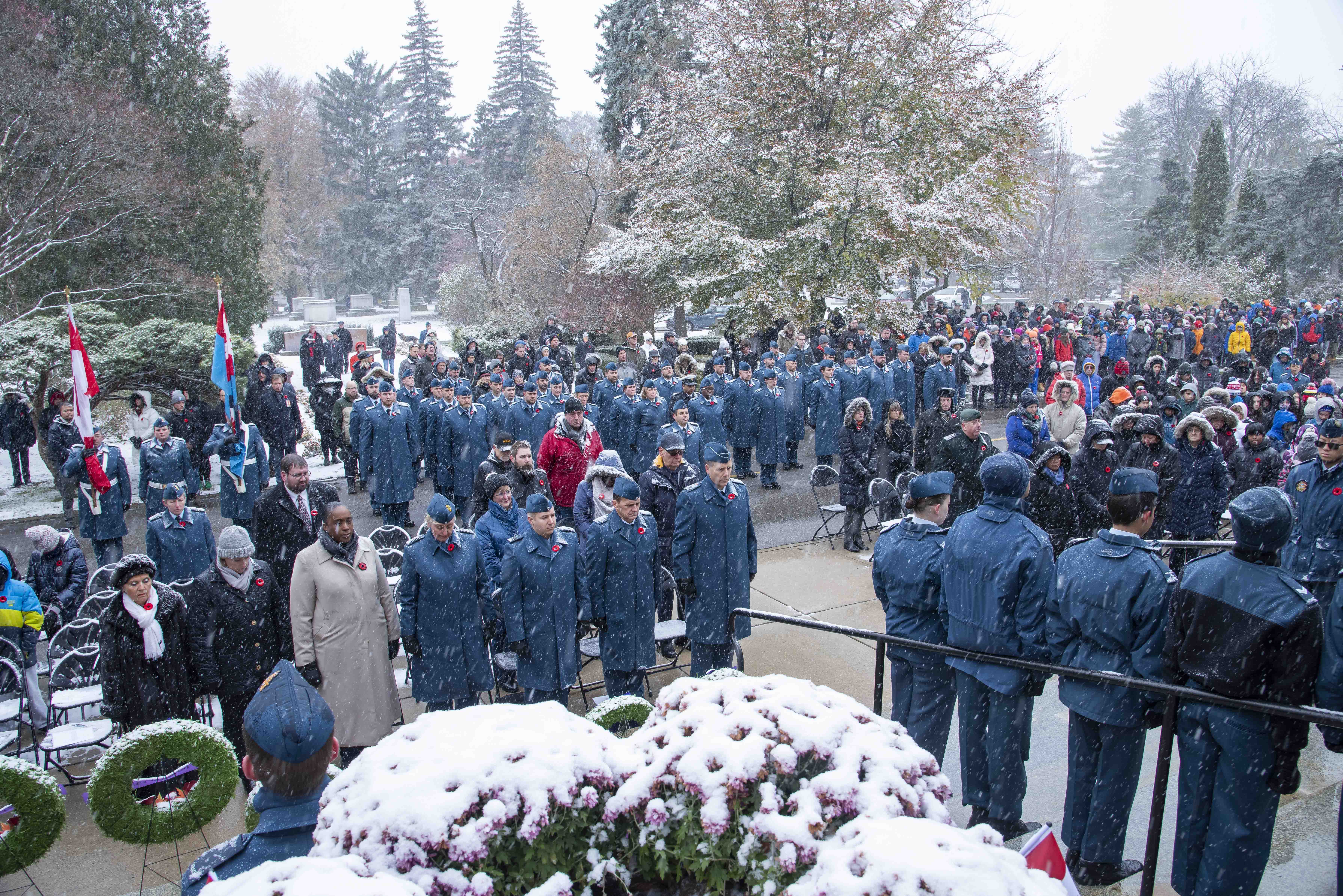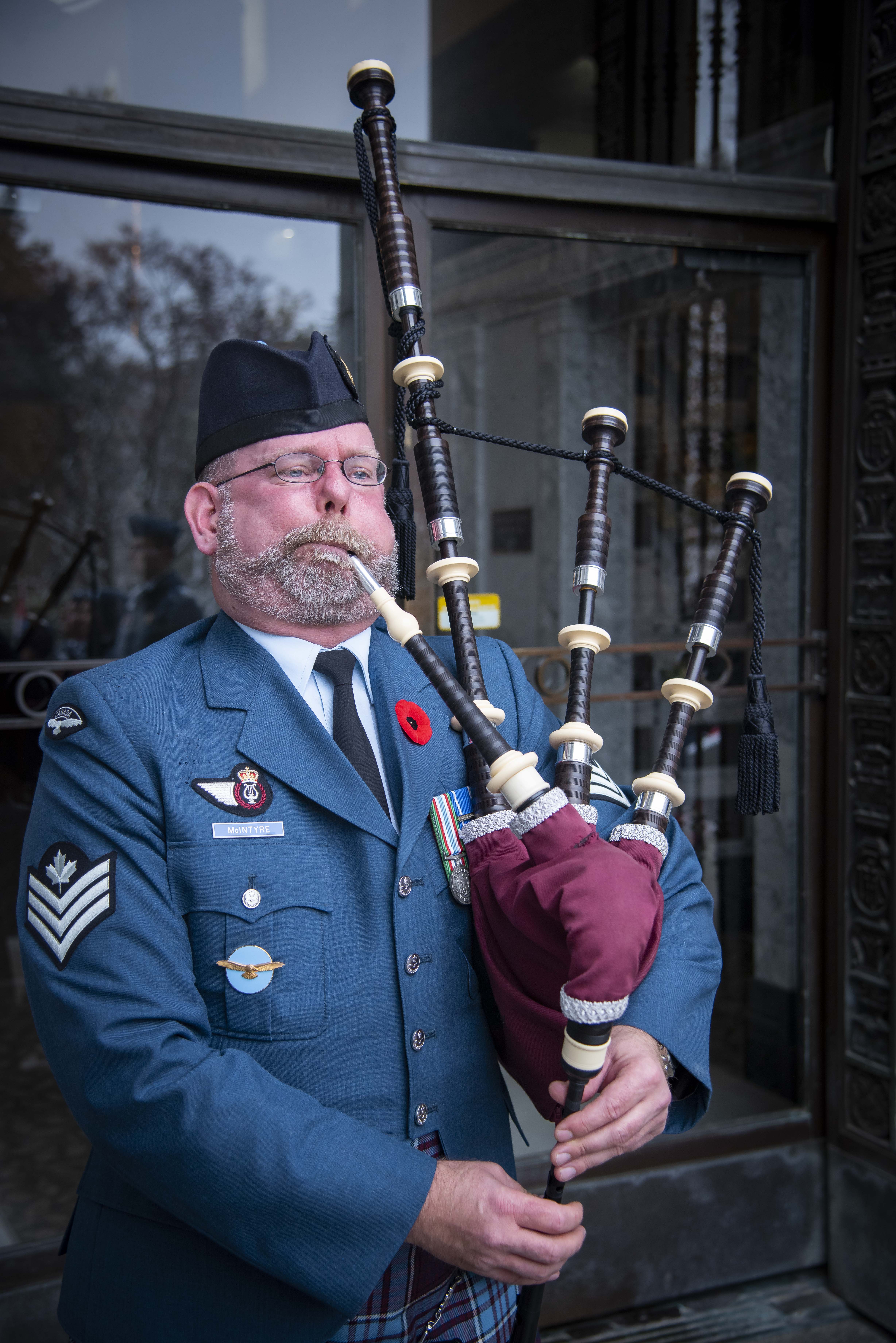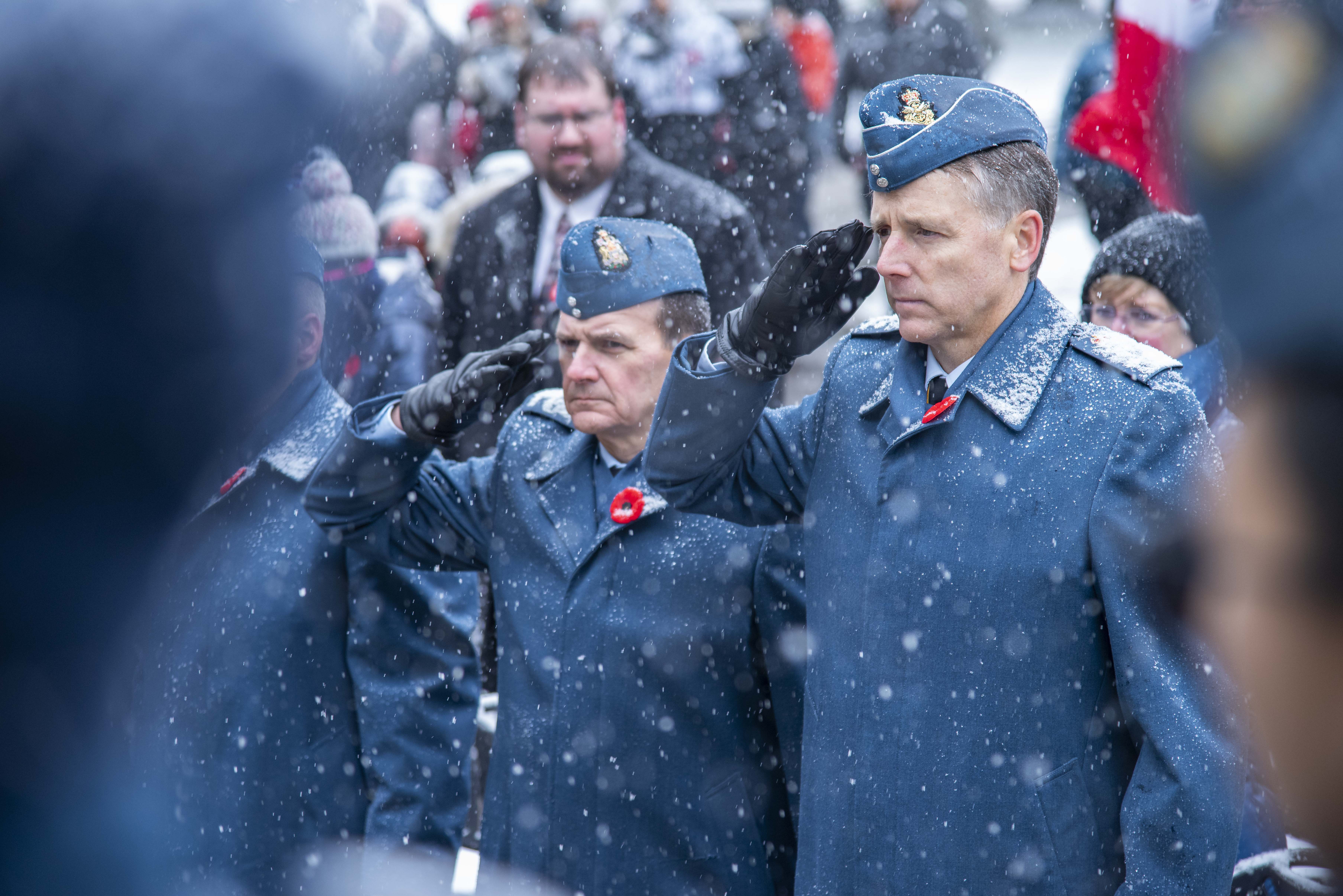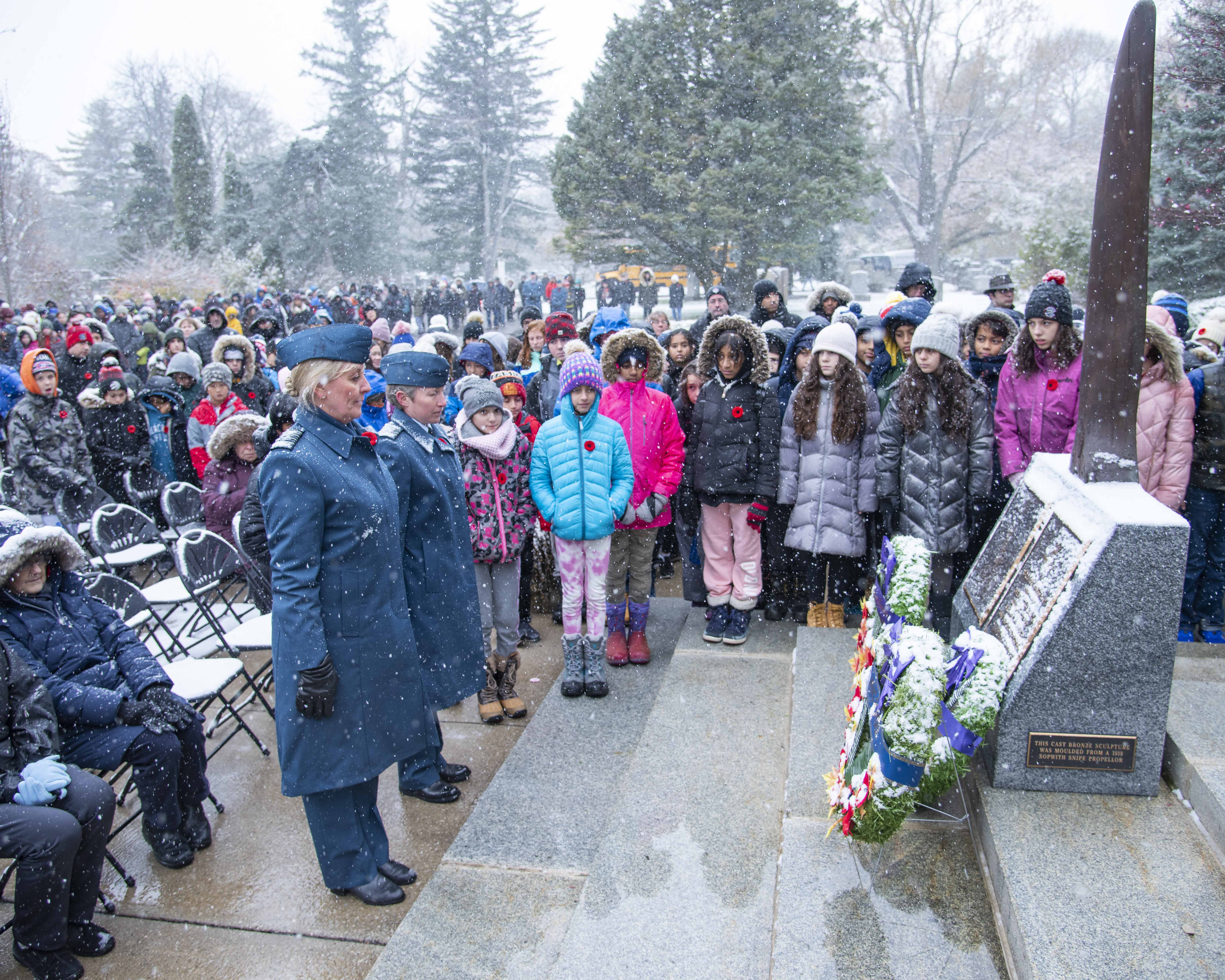Wing Commander William Barker remembered
News Article / November 22, 2019
Click on the photo under “Image Gallery” to see more photos.
On November 11, 2019, the Royal Canadian Air Force participated in an annual Remembrance Day ceremony held in front of the mausoleum in Mount Pleasant Cemetery, Toronto, where Wing Commander William Barker, VC, is interred. Lieutenant-General Al Meinzinger, commander of the Royal Canadian Air Force, spoke during the solemn commemoration of Wing Commander Barker and all our war dead. Here are his remarks.
From Lieutenant-General Al Meinzinger
Commander of the Royal Canadian Air Force
Ladies and gentlemen, welcome to today’s ceremony. I want to make special note of the presence of all our veterans and to welcome them.
You honour us with your presence
I am also pleased to see that so many young people have joined us here today.
You are also one of the most important reasons we gather on days like today so the torch of remembrance can be passed from our hands to yours.
One hundred and one years ago, the guns fell silent across the battlefields of Europe and the bells of peace rang out.
The First World War—“the Great War—“La Grande Guerre”—the so-called “war to end all wars”—was over.
At least 10 million soldiers, sailors and aviators had been killed and another 29 million were wounded, captured or missing. Millions of civilians had been killed or injured.
More than 62,000 Canadians and Newfoundlanders gave their lives—and thousands more were wounded in mind and in body.
I think you will agree that those numbers are almost incomprehensible.
There is no greater sacrifice than to risk one’s life for another.
Today, we honor those who gave their lives during the First World War, and all those who have fallen in combat while protecting Canada or contributing to peace and security around the world.
And today we wear red poppies as a visible symbol that we remember those that made the ultimate sacrifice—and so we are inspired by them, and forever grateful for the freedom and peace that we enjoy.
As commander of the Royal Canadian Air Force, I am privileged to lead exceptional aviators who are dedicated to the service of Canada and Canadians.
And we are here to honour and remember one of our most remarkable members—Wing Commander William Barker.
Born in a log cabin in Dauphin, Manitoba, he served in the Royal Air Force during the First World War and came home with physical wounds as well as, I have no doubt, mental wounds as well.
He is the mostly highly decorated military member in the history of Canada, the British Empire and the Commonwealth of Nations. His friend and business colleague, Air Marshal Billy Bishop, called him the “the deadliest air fighter who ever lived”.
He was awarded the Victoria Cross, our highest military decoration for his bravery during the engagement that ended his war-time service.
On that fateful autumn day, he found himself battling a formation of 60 enemy aircraft over France. He destroyed several before being shot down, even though he was terribly wounded several times.
The air battle occurred on October 27, 1918, only 15 days before the war ended.
He was so close to coming home safely.
His wounds were grievous, and included losing the joint of his left elbow. Today, with modern medicine, I’m sure that his elbow could have been repaired, but 100 years ago nothing could be done to save it. If you look carefully at certain post-war photos of Wing Commander Barker, you can see that his injury was apparent.
While he was recovering in hospital, he wrote these words about receiving the Victoria Cross to a fellow pilot:
“It may be nice to have the VC. But believe me I would sweep them all in the fire to stand once more fit. The agony I have gone through has been damnable.”
Despite his experiences and his wounds, he had a distinguished career in the peacetime Royal Canadian Air Force and in civilian aviation.
He was commander of the Canadian Air Force when it became the ROYAL Canadian Air Force in 1924.
When we celebrate the RCAF’s 100th birthday in five years’ time, we will also celebrate the Wing Commander Barker. I am honored to have inherited the command of this wonderful institution from him.
Although he survived the war, William Barker would not live to be an old man.
The civilian aircraft he was demonstrating crashed on March 12, 1930, at Rockcliffe in Ottawa, next to the Canadian Aviation and Space Museum. He was only 35.
His funeral was the largest Toronto had ever seen, with more than 50,000 people lining the route of his funeral cortege.
As the years passed, however, it seemed as if the memory of this Canadian hero had faded from our memories.
But I am gratified to see that awareness of him is growing again and that the city of Toronto continues to find new ways to honour his incredible service to Canada.
I was delighted to learn from RCAF Council member, Mr. John Wright, the force behind the initiative, that a statue of William Barker will soon be erected here in Toronto.
When the City Planning Committee’s accepted the donation of the statue—with a view to placing it in a high-pedestrian area—they explained Wing Commander Barker’s significant linkages to Toronto in great detail.
The motion goes on to say, and I quote,
“A bronze statue has been crafted by renowned Canadian sculptor Armando Barbon with the approval of the descendants of William G. Barker.
“It is unique as it shows Barker in his Canadian Air Force uniform at the time he was appointed the first leader of the Royal Canadian Air Force.”
I congratulate everyone who had a hand in making this statue a reality.
It will further recognize the amazing service of Wing Commander Barker as does the monument you see here before you, which was unveiled in 2011.
Since then, we’ve held a Remembrance Day ceremony here every year to remember him and—symbolically—all those who have served in the RCAF throughout the decades.
And, in 2017, after receiving new Colours—our unique, ceremonial, consecrated flags—we placed our retired Colours on display at the Air Canada Centre here in Toronto.
The plaque that accompanies the Colours, which can be seen by passers-by as well as ticket holders outlines Toronto’s strong connection with William Barker, including the fact that he was the first president of the modern Maple Leafs hockey franchise.
I’m pleased to say that across Canada over the past year, several other events also honoured Wing Commander Barker. We renamed the Canadian Forces School of Aerospace Studies, which trains nearly 2,000 RCAF personnel annually, as the Wing Commander William G. Barker VC Aerospace College. A statue of Wing Commander Barker was unveiled at the National Air Force Museum of Canada in Trenton, Ontario. He also received his own stamp in the Canada Post’s “Canadians in Flight” stamp series that celebrates great Canadians with impressive achievements in aviation.
Someday, I hope that William Barker’s name will be as well-known as that of his friend, Billy Bishop.
Our proud history and heritage inspires those of us who serve in the Royal Canadian Air Force.
It is the cultural glue that binds us together, gives us purpose, and guides us toward the future.
More importantly, the examples of William Barker, and thousands more who served—and continue to serve—in the RCAF, are role models of courage, determination and valour.
All of us, whether we serve in the military or not, should strive to emulate their selfless dedication to a higher cause.
In a few moments we will observe two minutes of silence, in honour of our fallen.
But we must remember every day, and honour all those who served in times of war, of conflict and of peace who were willing to sacrifice everything for our country.
We offer all our veterans, especially those of you who have joined us here today, our thanks.
You are our true heroes. And, ladies and gentlemen, I also thank you for attending today’s ceremony and remembering the sacrifices of William Barker and all our brave predecessors.
Lest we forget. Nous nous souviendrons d’eux.
We will remember them.
